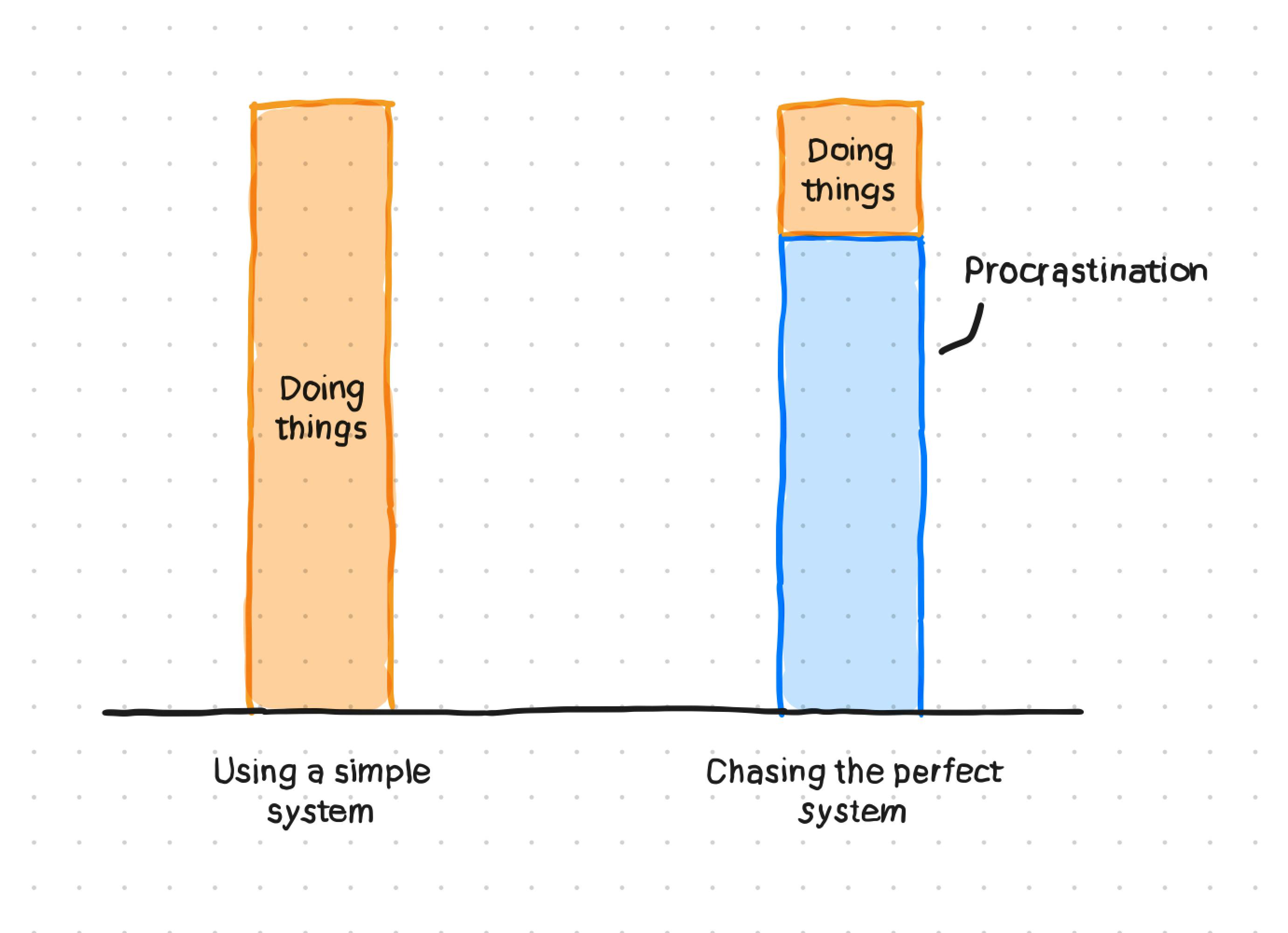3 Reasons Your Productivity Method Is Failing You
What’s the perfect productivity method? The one that helps you get things done.

In this article, we’ll explore the 3 most common productivity pitfalls and how you can avoid them. By the end, you’ll have a clearer understanding of what might be holding you back and some practical strategies for breaking free.
You’ve probably heard the Mike Tyson quote “Everyone has a plan until they get punched in the face.” Well, the same applies to productivity methods and apps - they often fall apart once hit with the realities and messiness of day-to-day life. When this happens, people tend to either endlessly tweak their system or abandon it altogether.
The truth is, there is no universally perfect productivity method or app that works optimally for every person, situation, and use case. Endlessly searching for that holy grail of productivity is often a trap that leads to procrastination rather than, well, actually being productive.
Here are 3 common traps to watch out for:
- Over-complicating and over-automating
Many people get sucked into trying to build the ultimate, pristinely organized productivity system. They try to automate every little thing, meticulously organize every note, and optimize every workflow. If you enjoy that, great! But don’t mistake it for true productivity.
It’s okay to keep things simple. Copy and paste is fine. A few duplicate tasks or unfiled notes aren’t the end of the world. Completed tasks don’t need to automatically sort. Open tasks don’t need to roll over to the next day (in fact, that can cause low-value tasks to pile up). - Chasing the perfect app
There are a dizzying number of productivity apps out there, each claiming to revolutionize your work. But the app itself doesn’t really matter that much. Even a simple text file can be an effective to-do list. Spending tons of time setting up and customizing apps can quickly become a sneaky form of procrastination. - Equating tidiness with productivity
A squeaky clean productivity system feels good, but it’s not the end goal. The goal is to make meaningful progress on things that matter. It’s okay to have a few loose ends, as long as you’re generally moving forward. Better to get things done imperfectly than to have a perfect system that never gets used.
So what does work?
In our experience, keeping things simple, flexible, and personalized is best. Two popular frameworks we recommend (which you may already be familiar with if you use NotePlan) are:
- PARA (Projects, Areas, Resources, Archives) for organizing files and notes:
“Projects” is where you keep a note for each ongoing project. A project has a defined start and end, so once it’s completed, you’ll move the corresponding note out of this folder.“Areas” contains notes that are likely to stay there permanently. These are the various aspects of your life or business, such as “Health,” “Finances,” or “Marketing.” Add notes here that help you maintain and improve these areas.“Resources” is where you store notes about topics you’re interested in learning about, like “Psychology.” These notes may not be immediately useful, but could be valuable in the future.“Archive” is primarily for finished projects and other inactive notes. - Bullet Journaling for managing tasks:
Create a daily spread note where you plan out your day. Start a new one each day and migrate (copy and paste) any important unfinished tasks from the previous day.Maintain two additional notes for your weekly and monthly spreads. These help you plan and track your tasks and goals over longer time periods.Create undated notes to serve as collections, where you can keep lists and notes related to specific themes or topics.
The key is to adapt these frameworks to suit your specific needs and preferences. Don’t feel obligated to follow them to the letter. Use them as a starting point and modify as needed to create a system that works for you. Remember, the ultimate goal is to have a simple, flexible setup that helps you stay organized and productive without getting bogged down in unnecessary complexity.
Ultimately, the “perfect” productivity method is the one that helps you make progress on your goals with a minimum of friction. Keep it simple, keep it personal, and keep your eye on the real prize: meaningful accomplishments, not a flawless system.